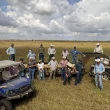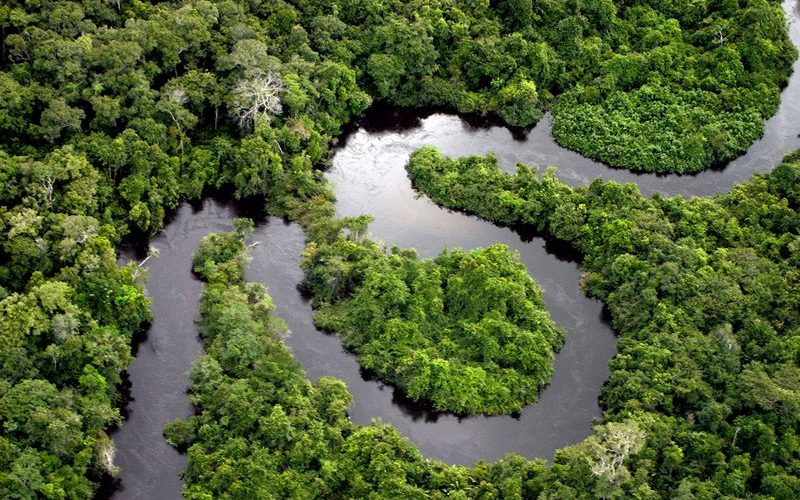A controversial new four-lane highway cutting through protected Amazon rainforest is under construction ahead of the COP30 climate summit, set to take place in November in the Brazilian city of Belém.
The highway aims to ease traffic congestion as more than 50,000 attendees, including world leaders, are expected at the international climate conference. While the state government promotes the project’s “sustainable” features, conservationists and local residents warn that the deforestation contradicts the summit’s climate objectives and could lead to further environmental damage.
COP30 highway: Boosting infrastructure or fueling deforestation?
The Amazon rainforest plays a vital role in absorbing carbon dioxide and maintaining global biodiversity. Critics argue that clearing thousands of acres of rainforest for a road undermines the very purpose of COP30, a summit dedicated to tackling climate change.
Along the partially built road, dense jungle gives way to cleared land, where logs are stacked high. Heavy machinery continues to carve through wetlands and a designated protected area, raising alarms over long-term damage.
Claudio Verequete, who lives just 200 metres from the construction site, has already felt the consequences.
“Everything was destroyed,” he says, pointing to the clearing. “Our açaí berry trees were cut down, and with them, our income. We have received no compensation and now rely on savings to survive.”
Verequete fears the road will make illegal deforestation easier, attracting businesses looking to expand.
“Our biggest worry is that one day someone will say, ‘We need this land for a gas station or a warehouse,’ and we’ll be forced to leave. Where would we go? This is our home.”
Despite being located right next to the road, his community will have no direct access due to walls built along the highway.
“For those of us living alongside it, there will be no advantage. The trucks will pass through, but if someone falls ill and needs to reach central Belém, we won’t even be able to use it.”
Wildlife at Risk: A fragmented Amazon ecosystem
Environmental experts warn that the highway will split the rainforest into disconnected zones, disrupting wildlife movement and reducing habitable areas for species.
Professor Silvia Sardinha, a wildlife veterinarian and researcher, fears the road will make it harder to rehabilitate injured animals.
“From the moment deforestation starts, there is a loss,” she says. “This highway will reduce safe areas for animals to be released back into the wild. Land animals will no longer be able to cross freely, limiting their breeding and survival.”
To address these concerns, the state government has promised to install wildlife crossings, but conservationists argue they will not compensate for the widespread deforestation already taking place.
What does COP30 mean for the Amazon rainforest ?
Brazilian President Luiz Inácio Lula da Silva and Environment Minister Marina Silva have promoted COP30 as a historic event, calling it “a COP in the Amazon, not a COP about the Amazon rainforest.”
They argue that hosting the summit in Belém will showcase the rainforest to the world and demonstrate the government’s commitment to environmental protection.
However, Professor Sardinha believes the event will be dominated by high-level negotiations, leaving local communities unheard.
“The conversations will take place among politicians and business leaders, but the people who actually live in the Amazon are not being consulted.”
Infrastructure overhaul: A new look for Belém
The Pará state government had originally proposed the highway, known as Avenida Liberdade, in 2012, but environmental concerns repeatedly stalled its progress. Now, the project has been revived as part of a major infrastructure drive ahead of COP30.
State infrastructure secretary Adler Silveira defended the project, calling it a “sustainable highway” designed to enhance mobility while minimising environmental damage.
Other major developments include new hotels to accommodate visitors, port expansion to allow cruise ships to dock, $81 million (£62 million) investment to double Belém airport’s capacity and Parque da Cidade, a 500,000 sq-metre park with green spaces, restaurants, and a sports complex.
Divided opinions in Belém
While environmentalists decry the project, some business owners in Belém welcome the changes.
Dalci Cardoso da Silva, a leather shoe vendor at Ver-o-Peso market, believes COP30 will boost trade.
“The city is finally being repaired. More people are visiting, and I can sell more. When I was younger, Belém was beautiful and well-maintained. It has since been neglected, but now there is renewed interest.”
However, others remain sceptical. Herbal medicine seller João Alexandre Trindade da Silva hopes the COP30 discussions lead to real action, not just promises.
“We hope decisions made at COP30 are actually implemented. If real measures are taken, we could see genuine environmental improvements.”
Will COP30’s carbon footprint undermine its climate goals?
As the global climate summit approaches, scrutiny is mounting over COP30’s environmental cost.
Critics question whether flying thousands of delegates across the world and investing in large-scale infrastructure contradicts the summit’s sustainability message.
As world leaders prepare to descend on Belém, the central question remains: Will COP30 lead to lasting environmental solutions, or will it be overshadowed by the very deforestation it seeks to prevent?





















